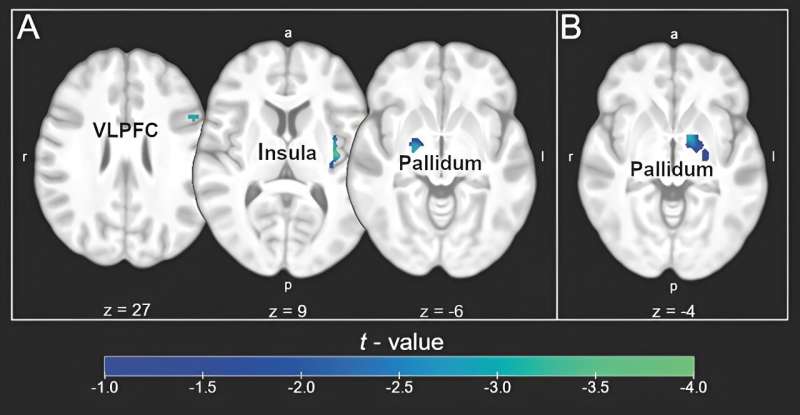This article has been reviewed according to Science X's editorial process and policies. Editors have highlighted the following attributes while ensuring the content's credibility:
fact-checked
peer-reviewed publication
proofread
Imaginary placebo intake study investigates neural response for regulating disgust

A study has compared the effects of a placebo pill and an imaginary pill in reducing visually induced disgust. The results showed that both interventions reduced the intensity of disgust at the images shown to the participants, with the "imaginary placebo" being associated with lower disgust ratings and higher ratings for expected and perceived efficacy.
Open-label placebos (OLPs) are placebos without deception, in the sense that patients know they are receiving an inert treatment, such as a pill not containing any active ingredients. But is taking the pill a critical component of the placebo effect?
To assess this issue, the research team led by Anne Schienle, with the support of the BIAL Foundation, used a novel approach to OLP administration: the imaginary intake of an OLP pill for regulating disgust.
In this study, 99 females with an average age of 23.2 years were randomly allocated to one of three groups: in the first, the participants ingested a placebo pill (OLP pill), in the second, they imagined the intake of a placebo pill (imaginary pill), and in the third, they passively viewed (PV) repulsive and neutral images.
In the article "The pill you don't have to take that is still effective: neural correlates of imaginary placebo intake for regulating disgust," published in March in the journal Social Cognitive and Affective Neuroscience, the authors explained that the participants viewed 30 disgusting images (for example, disgusting animals such as worms, rotten food, and bodily secretions) and 30 neutral images (pixelated versions of the disgust images with a mosaic-like appearance), while their brain's neural activity was assessed using functional magnetic resonance imaging (fMRI).
The results showed that both placebo interventions lowered the intensity of the experienced revulsion compared to passive viewing (PV) of the disgust pictures, with the "imaginary pill" being considered more effective than the OLP pill, being associated with lower ratings of disgust and higher ratings of expected and perceived efficacy.
This fMRI study was the first to compare the effects of different forms of OLP administration and showed that the imaginary intake of an OLP appears to be a superior method for regulating feelings of disgust compared to actually ingesting a placebo pill.
According to Anne Schienle, the study's innovative approach opens up new perspectives on the potential of placebo interventions in emotion regulation. "These findings have important implications for the development of new OLP-based interventions in clinical and non-clinical contexts," says this researcher from the University of Graz (Austria).
More information: Anne Schienle et al, The pill you don't have to take that is still effective: neural correlates of imaginary placebo intake for regulating disgust, Social Cognitive and Affective Neuroscience (2024). DOI: 10.1093/scan/nsae021



















